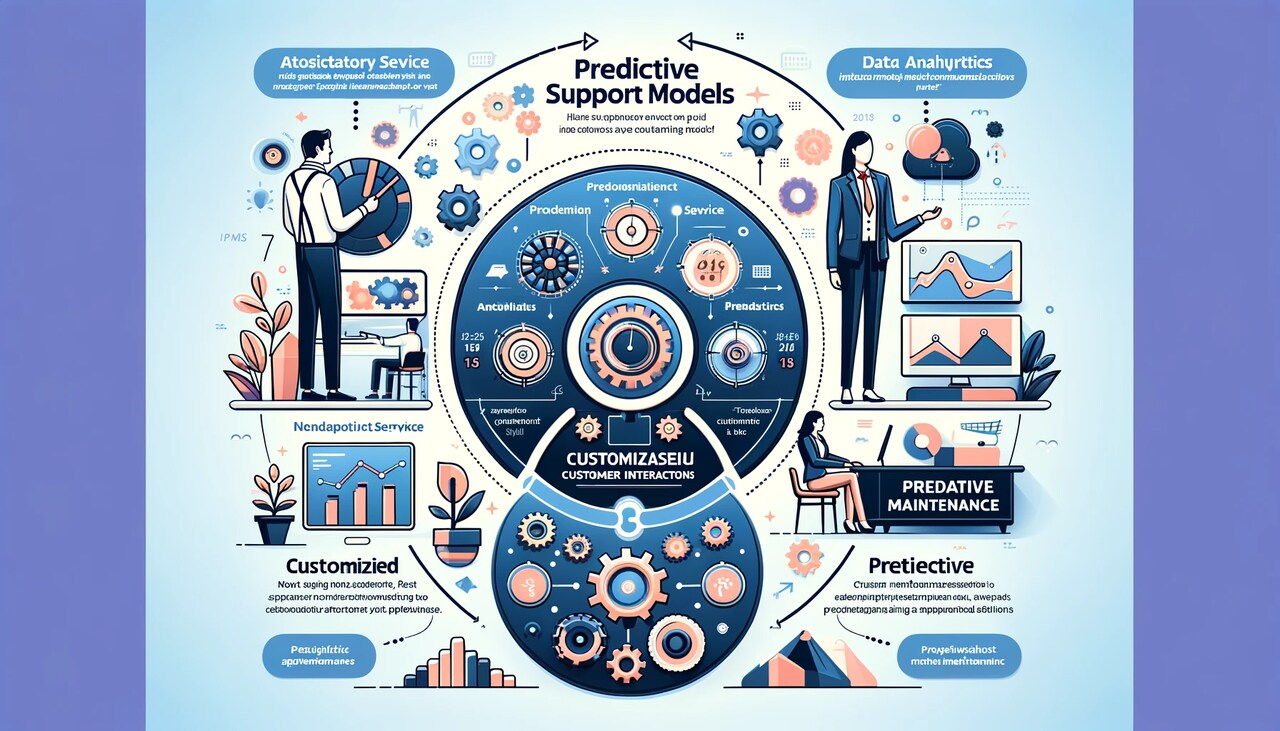
Technical Support in 2025: Why It’s the Backbone of Modern Businesses
Technical support in 2025 is no longer a reactive help desk function — it is a strategic pillar of digital operations, customer experience, and brand reputation. In a world where every click counts, businesses in the USA and UK know that exceptional support builds trust, prevents downtime, and ensures every customer interaction is friction-free.
Technical support in 2025 is more than troubleshooting — it’s a strategic engine powering customer trust, business continuity, security, and growth. Discover how USA & UK companies can build high-performing support operations and stay ahead with AI, automation, and proactive digital experience management.
In today’s digital-first world, technical support isn’t just about fixing problems — it’s about preventing them, improving customer trust, and ensuring every digital experience runs smoothly. Whether you’re running an e-commerce site in London or a SaaS startup in San Francisco, great technical support can make or break your customer relationships.
Let’s explore how technical support has evolved, why it’s now the backbone of business success, and how companies in the USA and UK can build support operations ready for 2025 and beyond.
The Evolution of Technical Support in the Digital Era
-
From Reactive to Proactive Support Systems
-
24/7 Global Technical Support Teams
-
Cloud, AI, and Automation in Technical Support
Why Technical Support in 2025 Matters More Than Ever
-
Customer Loyalty & Trust
-
Preventing Downtime & Loss
-
Enhancing Digital UX in USA & UK Markets
Types of Technical Support Models
-
In-House vs Outsourced
-
Tiered Support Levels (L1, L2, L3)
-
Hybrid & Managed Technical Support Models
Top Trends Transforming Technical Support in 2025
-
AI-Powered Support Agents & Predictive Monitoring
-
Self-Healing Systems & Remote Diagnostics
-
Personalized Support With Data & AI
-
Cybersecurity-Integrated Technical Support
How to Build or Hire a High-Performing Technical Support Team
-
Key Human & Technical Skills
-
Essential Tools & Platforms
-
Smart Outsourcing for USA/UK Companies
Measuring Success in Technical Support in 2025
-
Core KPIs (FRT, ART, CSAT, NPS)
-
AI-Driven Operational Intelligence
-
Continuous Feedback & Improvement Loops
Technical Support in USA & UK — Key Market Insights
-
Customer Behavior & Cultural Differences
-
Compliance (GDPR, CCPA)
-
Local vs Offshore Support Approaches
The Evolution of Technical Support in the Digital Era
From Reactive to Proactive
Traditionally, tech support teams waited for problems to occur. Today, they anticipate issues before they impact users. Predictive monitoring tools now detect anomalies, enabling companies to act before downtime happens.
The Rise of 24/7 Global Teams
Modern consumers expect immediate help—no matter the time zone. Businesses are turning to remote and distributed support models, ensuring round-the-clock coverage without burning out their staff.
Cloud, AI, and Automation
AI-powered bots, remote monitoring, and cloud-based ticketing systems are redefining efficiency. Companies that invest in these tools are cutting response times by up to 40% while improving satisfaction.
Why Technical Support Matters More Than Ever
Customer Retention and Loyalty
It costs five times more to acquire a new customer than to keep an existing one. Responsive, human-centered technical support keeps users happy, loyal, and vocal about your brand.
Minimizing Downtime and Productivity Loss
Every minute of downtime can cost thousands. Proactive support ensures business continuity — especially critical in finance, healthcare, and retail sectors.
Enhancing Digital Experiences
For US and UK audiences, user experience is king. A single poor interaction can lead to negative reviews or brand distrust. Excellent technical support ensures seamless, frustration-free experiences.
Types of Technical Support Models Businesses Use

In-house vs. Outsourced
In-house teams offer control and brand consistency, but outsourcing to specialized providers can reduce costs and bring global expertise.
Tiered Support Levels Explained
- L1 (First Line): Basic troubleshooting and FAQs
- L2 (Second Line): Deeper technical analysis
- L3 (Third Line): Engineering-level issue resolution
Managed & Hybrid Models
Many modern businesses now combine internal oversight with outsourced execution — achieving both agility and cost efficiency.
The Future of Technical Support — Key Trends for 2025
AI-Driven Chatbots & Predictive Issue Detection
Machine learning models now analyze logs to predict potential failures. In 2025, over 70% of routine tickets will be handled by AI chatbots.
Remote Monitoring & Self-Healing Systems
IoT and automation allow systems to fix themselves without human intervention — minimizing human error and downtime.
Data-Driven Personalization
Support systems now adapt based on user profiles, offering tailored guidance that feels personal — even in automated channels.
Cybersecurity Integration
With data breaches on the rise, technical support and cybersecurity must go hand-in-hand. Support staff must be trained to detect and mitigate potential threats.
How to Build (or Hire) a Great Technical Support Team
Key Skills
Empathy, problem-solving, technical know-how, and clear communication are essential. The best teams blend tech mastery with customer empathy.
Tools of the Trade
Leading platforms like Zendesk, Freshdesk, Jira Service Management, and Intercom are streamlining workflows and customer interactions.
Outsourcing Smartly
When hiring a third-party provider, look for:
- 24/7 coverage and scalability
- Transparent reporting and SLAs
- Cultural and language alignment (especially for USA/UK users)
Measuring Success in Technical Support
Key KPIs
Track First Response Time (FRT), Average Resolution Time (ART), Customer Satisfaction (CSAT), and Net Promoter Score (NPS).
Analytics-Driven Optimization
AI tools can identify common issues and automate fixes — improving efficiency while reducing costs.
Feedback Loops
Collecting user feedback post-interaction helps close the loop and refine support operations over time.
Technical Support in the USA & UK — Market Insights

Customer Expectations
UK users expect politeness and transparency; US users value speed and proactive updates. Localization matters.
Compliance & Data Protection
Support systems in both regions must comply with GDPR (UK) and CCPA (USA). Secure data handling is no longer optional.
Local vs. Offshore
Local teams offer cultural alignment, but offshore teams provide scalability and savings. Many firms now opt for a blended model.


